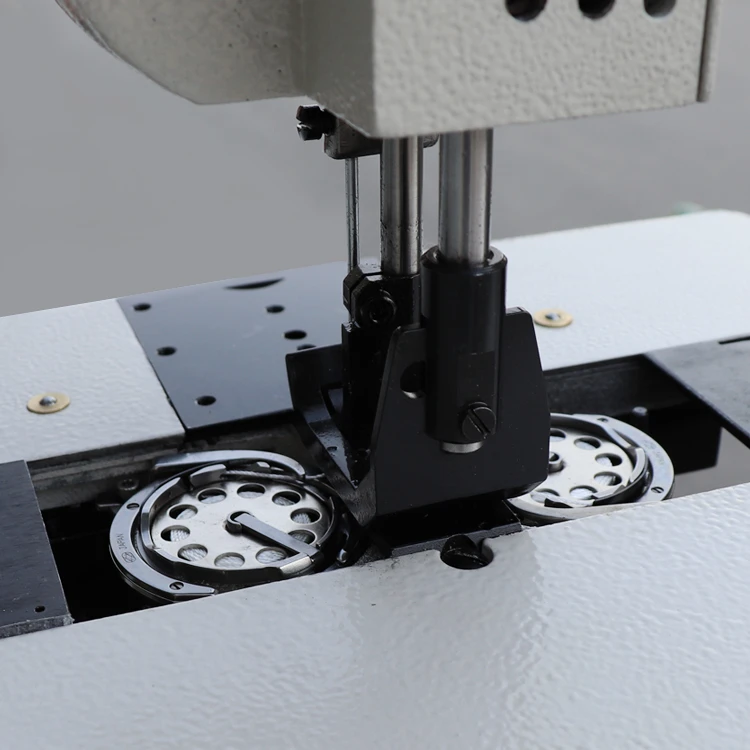Features of an Automatic Overlock Sewing Machine for Efficient Sewing Projects
The Automatic Overlock Sewing Machine A Game Changer in Textile Production
In the world of textile manufacturing, efficient, high-quality sewing machines are vital for streamlining production processes and ensuring that garments meet industry standards. Among these innovations, the automatic overlock sewing machine has emerged as a significant advancement in sewing technology, making a profound impact on both professional sewing environments and home-based crafting.
What is an Automatic Overlock Sewing Machine?
At its core, an automatic overlock sewing machine is designed to trim the edges of fabric while stitching them, providing a clean, finished look. Unlike traditional sewing machines that create a simple stitch, overlock machines use multiple threads (usually between three to five) to form a stitch that encases the fabric edges, preventing fraying and improving durability. The automation aspect means that these machines can perform various tasks automatically, such as adjusting the tension, speed, and stitch width, enhancing efficiency and precision.
Benefits of Using Automatic Overlock Sewing Machines
1. Time Efficiency One of the primary advantages of using automatic overlock machines is the significant reduction in sewing time. The automation features eliminate the need for manual adjustments, allowing operators to focus on the creative aspects of garment creation rather than tedious configuration.
2. Consistent Quality The consistent nature of machine stitching ensures that every seam is uniform, leading to higher quality products. This is particularly important in mass production settings, where maintaining quality across large quantities is essential.
3. Versatility Automatic overlock machines are versatile and can be used for a variety of sewing techniques, such as rolled hems, flatlocking, and chainstitching. This adaptability makes them suitable for different fabrics, from delicate lace to heavy denim, enabling the creation of diverse garment types.
4. User-Friendly Features Many modern automatic overlock sewing machines come with integrated features such as LCD screens, built-in tutorials, and one-step threading systems, making them accessible to both beginners and experienced users. These features reduce the learning curve and enhance the overall user experience.
automatic overlock sewing machine

5. Cost-Effectiveness While the initial investment in an automatic overlock sewing machine may be higher than standard sewing machines, the long-term savings on labor costs and material wastage often justify the expense. Their efficiency can lead to faster turnaround times and increased production outputs.
Applications in the Fashion Industry
The fashion industry has embraced automatic overlock sewing machines for their ability to meet the demands of modern garment production. They are used extensively in creating ready-to-wear collections, athletic wear, and intimate apparel where stretchy seams and clean finishing are crucial. Additionally, as sustainable fashion takes center stage, many brands are utilizing these machines to minimize fabric waste through efficient cutting and sewing techniques.
Innovations and Future Trends
The future of automatic overlock sewing machines looks promising, with technological advancements continually reshaping manufacturing processes. Innovations such as computerized systems that utilize artificial intelligence for pattern recognition and adaptive stitching are on the rise. These advancements not only improve the machinery’s functionality but also enhance precision and reduce the risk of operator error.
Moreover, the integration of smart technology allows for real-time monitoring and adjustments, which can lead to predictive maintenance and reduced downtime. This trend towards automation and smart manufacturing is paving the way for a new era in the textile industry, where productivity and sustainability go hand in hand.
Conclusion
In conclusion, the automatic overlock sewing machine represents a significant leap forward in sewing technology, offering unparalleled benefits to manufacturers, designers, and hobbyists alike. Its efficiency, versatility, and ability to produce high-quality finishes have made it an essential tool in today’s fast-paced fashion industry. As technology continues to evolve, we can expect even greater innovations that will further revolutionize how we create and produce garments, ensuring that the fashion industry remains dynamic and responsive to the needs of consumers.
-
Boost Production Efficiency with a Pattern Sewing MachineNewsAug.29,2025
-
Industrial Excellence with the Best Heavy Duty Sewing MachineNewsAug.29,2025
-
Precision and Power with the Best Pattern Sewing MachineNewsAug.29,2025
-
Reliable Bulk Packaging Starts With the Right FIBC Sewing MachineNewsAug.29,2025
-
Advanced Packaging Solutions: Elevate Productivity with Jumbo Bag Sewing Machine and Industrial Stitching EquipmentNewsAug.29,2025
-
High-Performance Solutions for Bulk Packaging: FIBC Sewing Machine and MoreNewsAug.29,2025
-
Maximize Efficiency with an Industrial Cylinder Arm Sewing MachineNewsAug.28,2025


























